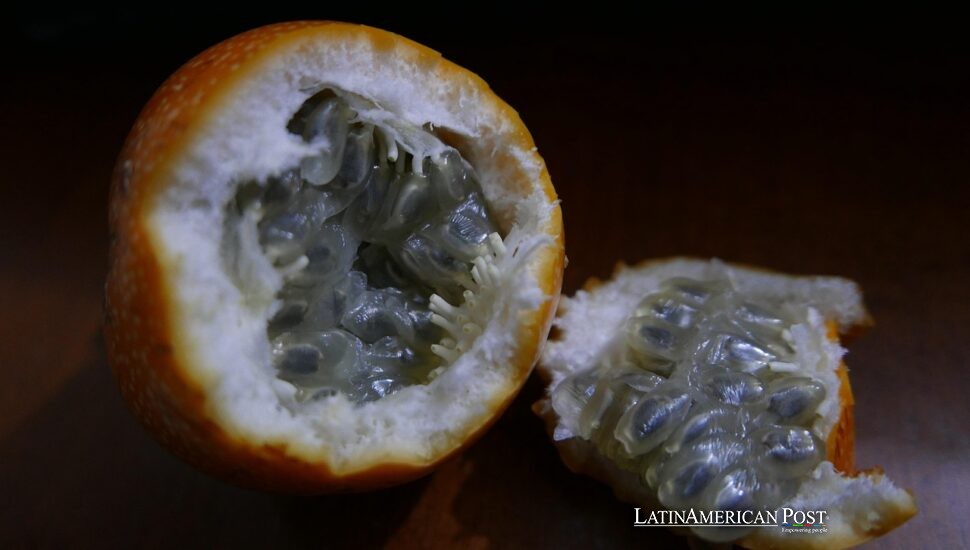South America’s Hidden Fruits: Five Surprising Delights Revealed

South America holds fruits almost unknown in other places, from busy markets in the Andes to valleys with tropical rivers. “Daily Meal” put together a catalog that showed five special kinds. – Their clear tastes, interesting pasts along with good nutrition create great food items.
An Evolving Tradition of Culinary Exploration
The huge land of South America has rainforests and mountains next to plains – each area sustains several native fruits. For ages, people in that area have grown these valued crops for food and also important practices, using them in meals, celebrations next to old treatments. Folks from other places noticed them. When a person walks into a market within Bogotá or Quito, they find unusual shapes plus shades. Sellers display these fruits: a bitter drink, a lively spread, and a blend of sugary and sharp flavors to make an impression.
Scientific work reveals the possible advantages of these lesser-known items, too. Farm research, besides food studies, indicates that several fruits, located only in parts of South America, hold many vitamins and safeguards next to other healthy elements. Area cooks, besides folks who consider wellness, chose these fruits – they also want to alter the ways these items strengthen drinks, sauces, or innovative combinations. Even with greater demand, transit troubles plus spoilage frequently keep these fruits close to home – that means much remains rare or unfamiliar away from their local habitat.
Daily Meal, a website with food and journey details, checked five good South American crops, which proves this tendency. It explored markets, talked with sellers as well as looked at what was already learned. Its results show unusual flavors and what the fruits do to keep culture and variety of life. With no special order are five marvels that rarely leave the continent yet are appreciated by people from Colombia’s high mountains to Ecuador’s full valleys.
Five Fruits Shaping South America’s Flavor Landscape
1. Lulo (Naranjilla)
Lulo appears as a small orange. When opened, the interior shines with a bright green color similar to an unripe tomato. In the International Journal of Fruit Science, studies tell about the notable vitamin C plus antioxidant content of lulo – these studies confirm its healthful value. Studies cited in the International Journal of Fruit Science discuss lulo’s notable vitamin C and antioxidant content. Traditionally grown in Colombia and parts of Central America, this tangy fruit belongs to the nightshade family, carrying a refreshing bite akin to lime or tangerine. Local cooks typically transform lulo into sauces, ice creams, and a prized drink called lulada. Because the rind is inedible, the pulp is what matters—zesty, acidic, and distinctly tropical. Though lulo export stays restricted because of its fragile delivery requirements, certain niche stores overseas carry frozen pulp – for those with a taste for its tangy flavor.
2. Sweet Cucumber (Pepino Melon)
A mild, melon-like aroma and gentle sweetness define this member of the nightshade family. The sweet cucumber, with striped skin that is yellow or purple, looks like a stretched gourd or an oval melon. Agricultural studies in Peru show that it has vitamins A plus C plus calcium. South Americans often offer fresh, sweet cucumber, perhaps adding chili or salt to boost its soft taste. As the “Daily Meal’s” list indicates, this fruit is a fit for fruit salads – it gives an unusual crispness to go alongside bright, tropical tastes.
3. Tree Tomato (Tamarillo)
The tree tomato possesses an appearance that signals kinship to the common red tomato, but flavor and visual traits separate them. From the Andes, the oval fruit shows a small, bitter peel. Peeling it reveals a seed-filled interior reminiscent of conventional tomatoes, though with a sweeter, tangier bite. According to a 2021 study published in the Journal of Food Composition and Analysis, tree tomatoes deliver an array of vitamins—particularly A, B, C, and E—plus iron and fiber. Residents of Ecuador and Colombia transform the fruit into chutneys, jams, and smoothies, pairing its bright acidity with meats or cheeses. Chef demonstrations across Andean countries regularly feature it in sauces that brighten local chicken or fish dishes.
4. Granadilla
Granadilla belongs to the passion fruit family and exudes the same kind of succulent appeal: an orangish outer shell dotted with whitish specks. Inside, small black seeds are surrounded by a translucent pulp that is sweet rather than tart. Researchers have drawn parallels to conventional passion fruit, though they find granadilla’s flavor gentler and more dessert-like. A Food and Nutrition Bulletin article in 2018 showed the fruit had promise for hydration and nutrient supply. The raw granadilla is cracked open quickly. The soft seeds fall onto a spoon or right into a person’s mouth. Its lightness and natural sweetness earn it a place in juices and desserts all across Colombia, particularly in refreshing drinks blended with other fruits.
5. Andean Blackberry (Mora)
Andean blackberries often receive descriptions as tarter than North American blackberries – they show a deep purple color, touched by burgundy. Grown at high altitudes, between 1,200 and 3,500 meters, these fruits grabbed awareness within horticultural studies because of their vitamin C and polyphenol levels. For example, old Andean recipes include them in jams and smoothies. They become savory poultry sauces. Shoppers in local markets sometimes buy them fresh for a midday snack, though they can also be found in frozen pulp form for easy blending at home. Daily Meal’s compilation highlights how substituting the typical blackberry with the Andean variety can inject tang and complexity into pies, sorbets, or fruit salads.
Bridging Culture, Health, and Global Interest
While modern diets worldwide often revolve around internationally familiar staples—bananas, apples, pineapples, and the like—these five fruits remain relatively obscure outside South America’s borders. At the same time, scientific investigations into their nutritional properties continue. Published findings in leading agronomy journals point out that each variety delivers a unique combination of antioxidants, vitamins, and trace minerals that may bolster immune response or support metabolic wellness.
Yet beyond nutritional facts and exotic tastes, these fruits signify deeper cultural bonds. Farmers who cultivate lulo or Andean blackberries typically rely on time-tested methods that keep biodiversity intact. For local chefs seeking distinctive flavors to champion, the produce grown in mountainous or jungle terrains becomes a palette for gastronomic innovation. When visitors come across the bright orange granadilla or the curious cross between a cucumber and melon, they discover that food is a gateway to understanding South American identity.
Also Read: This Natural South American Drink Works Like Ozempic—And Lowers Heart Disease Risk
Daily Meal’s compilation of these lesser-known fruits encourages culinary explorers worldwide to remain curious. Markets in cities like Bogotá or Quito might be the best place to hunt down fresh samples, but increasingly, specialized grocers and online suppliers are offering limited shipments of sweet cucumber or even frozen pulp of lulo. These advances suggest a rising drive toward such natural wonders. This may boost the chance that dining experiences in distant lands include Andean flavors. In promoting such obscure riches, both visitors plus culinary enthusiasts enrich their appreciation – additionally, they recognize the people who fostered such crops across generations.




